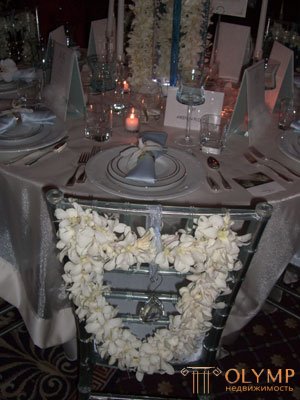

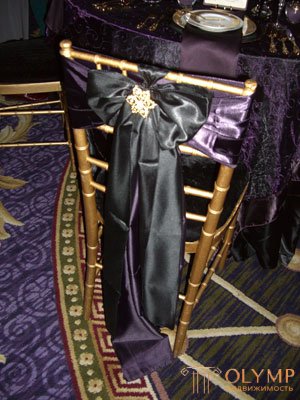
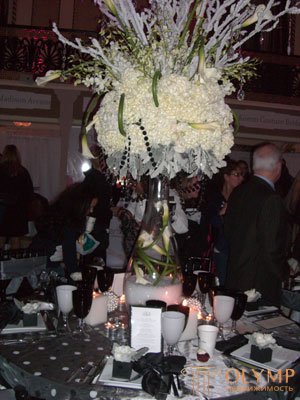
In some cases, the table is decorated with flower garlands. They can be placed in different ways: along the edge of the table in a straight line, in waves, diagonally, divide the table into squares according to the number of guests sitting behind it, etc. Garlands and ribbons decorate usually large tables. You can combine garlands and small floral arrangements, but they should be placed strictly symmetrical.
In addition to the garlands, the table is decorated with small boutonnieres - bouquets 5-10 cm in diameter. The boutonniere consists of several small flowers or one large leaf against the background, supplemented with a decorative ribbon. Boutonnieres are prepared from long unfading live flowers and leaves. Flowers, of course, must be fresh. Usually a large composition is put on the table, and buttonholes of the same colors are laid out near each device. For example, a low round bouquet of roses with perennial gypsophila, ferns in an elegant transparent vase is placed in the center of the table, and boutonnieres of small roses are laid out near the devices. In addition to roses, for the manufacture of boutonnieres use small carnations and chrysanthemums, hyacinths (individual corollas), marigolds, violets, sweet peas, daisies, rose leaves, ivy, laurel cherries, greens of a fern, asparagus, gypsophila. Boutonnieres with leaves look sleeker than those made only from flowers with ribbons.
Before making boutonnieres, flowers and leaves should be kept in water for at least 4 hours so that the bouquets will stay fresh longer. Sections of stems and leaves are recommended to be dipped in melted wax or stearin.
Flowers for a bouquet or a garland should be chosen so that their shade is in harmony with the tablecloth, napkins, dishes. Delicate tones of dishes should be emphasized more strong colors of flowers. With sufficiently bright colors of dishes it is better to take the flowers of one pastel tone. It is necessary to take into account the style in which the table is laid: on the "avant-garde" table lilies are unlikely to be appropriate.
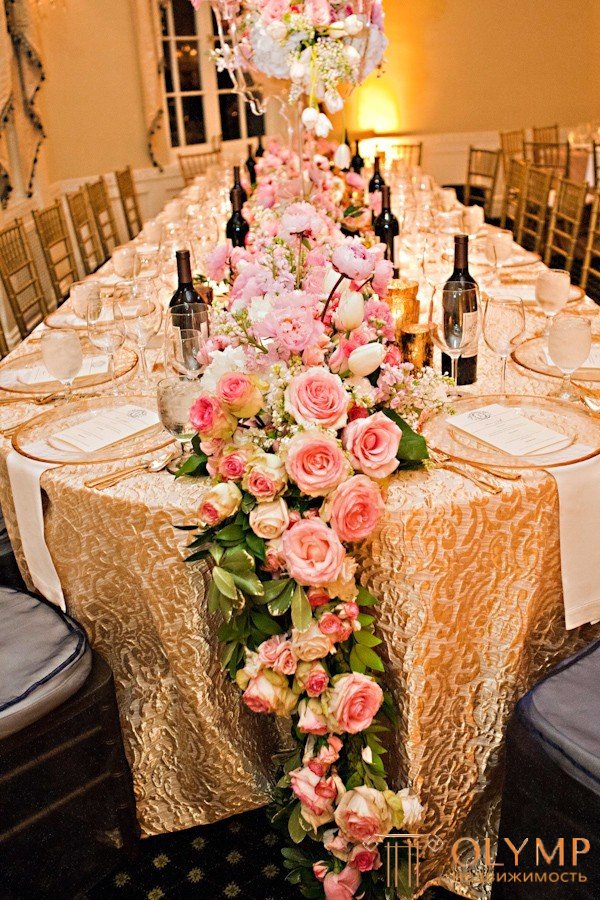
The use of flower chains:
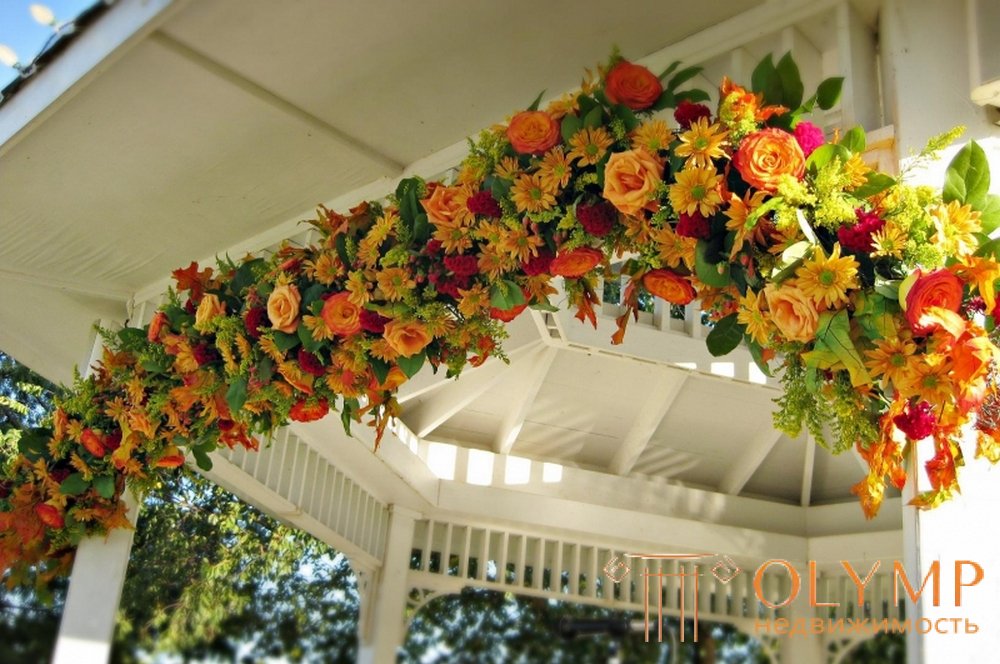
In the manufacture of floral decoration can be used rare specimens of plants from Africa and Asia. We work with suppliers directly, so the prices for extraordinary flower garlands will pleasantly surprise you.
Types of jewelry:
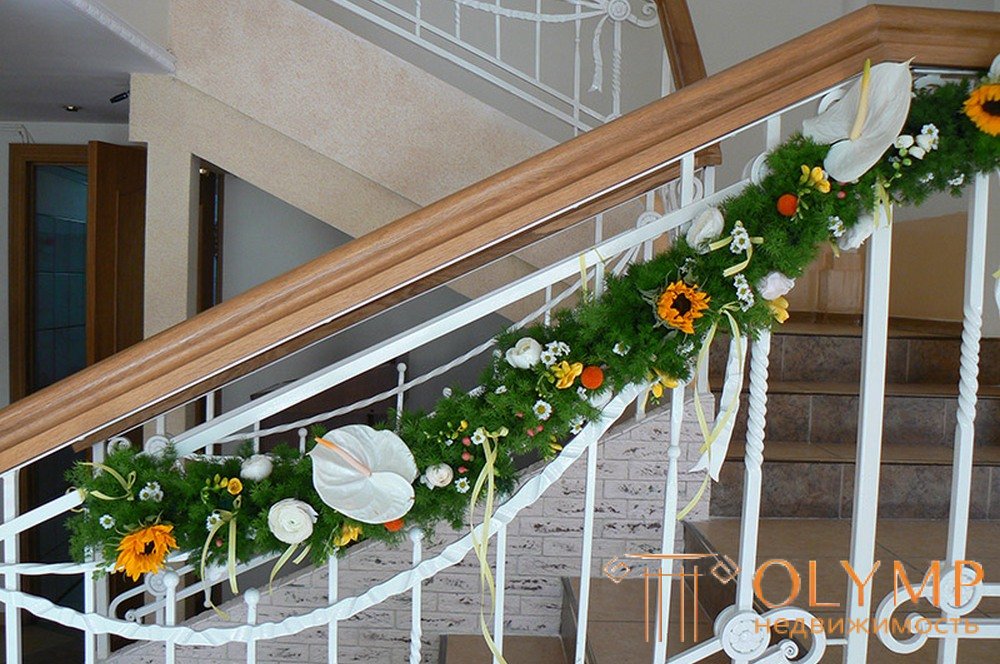
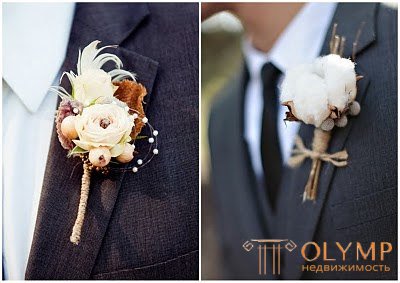
Boutonoure (fr. Boutonnière - flower in buttonhole) - one or more flowers or buds (usually carnations or roses) in a buttonhole, an accessory for a men's suit.
At the beginning of the 20th century, the boutonniere became an identifying sign of idle dandies. Without a flower in his buttonhole, for example, Oscar Wilde did not appear in public. Currently, the boutonniere is found in a festive men's suit (for example, at weddings, at dance balls).
Что бы оставить комментарий войдите
Комментарии (0)